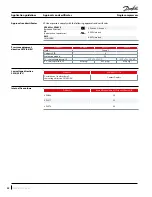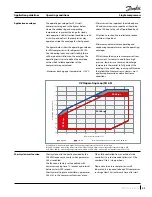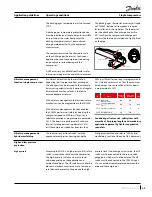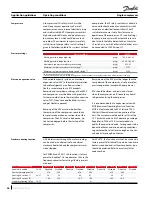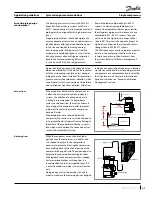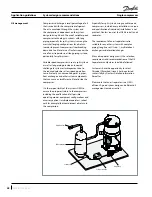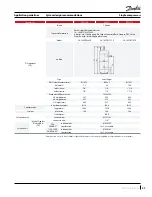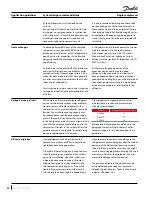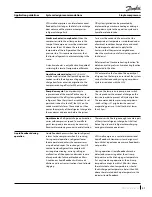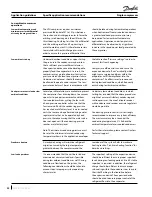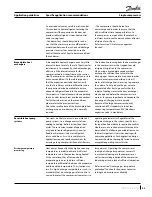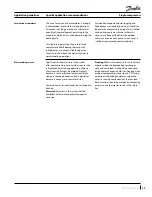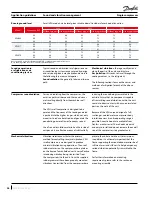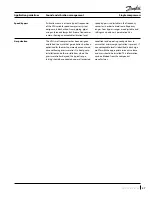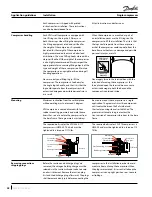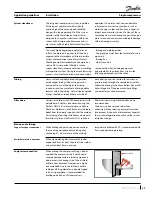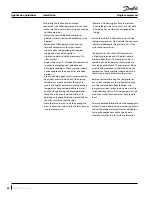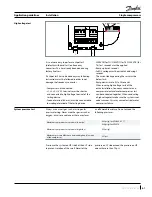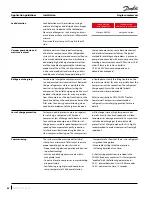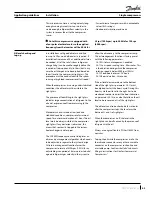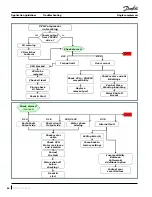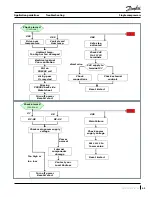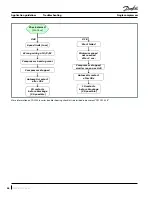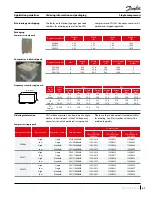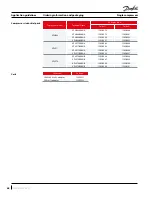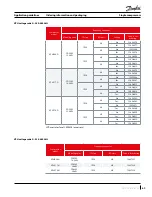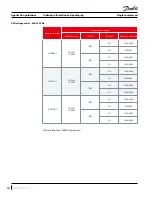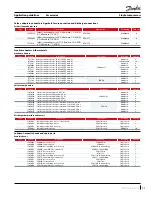
Application guidelines
56
FRCC.PC.023.A7.22
Single compressors
Sound and vibration management
Compressor sound radiation
Mechanical vibrations
For sound radiating from the compressor, the
emission path is airborne and the sound waves
are travelling directly from the machine in all
directions.
The VZH scroll compressor is designed to be
quiet and the frequency of the sound generated
is pushed into the higher ranges, which not only
are easier to reduce but also do not generate the
penetrating power of lower-frequency sound.
Use of sound-insulation materials on the inside of
unit panels is an effective means of substantially
reducing the sound being transmitted to the
outside. Ensure that no components capable
of transmitting sound/vibration within the unit
come into direct contact with any non insulated
parts on the walls of the unit.
Because of the VZH unique design of a full-
suction gas-cooled motor, compressor body
insulation across its entire operating range is
possible. Acoustic hoods are available from
Danfoss as accessories. These hoods are quick
and easy to install and do not increase the overall
size of the compressors to a great extend.
Vibration isolation constitutes the primary
method for controlling structural vibration. VZH
scroll compressors are designed to produce
minimal vibration during operations. The use of
rubber isolators on the compressor base plate or
on the frame of a manifolded unit is very effective
in reducing vibration being transmitted from
the compressor(s) to the unit. Once the supplied
rubber grommets have been properly mounted,
vibrations transmitted from the compressor base
plate to the unit are held to a strict minimum.
In addition, it is extremely important that the
frame supporting the mounted compressor be of
sufficient mass and stiffness to help dampen any
residual vibration potentially transmitted to the
frame.
For further information on mounting
requirements, please refer to the section on
mounting assembly.
Typical sound and vibration in refrigeration and
air conditioning systems encountered by design
and service engineers may be broken down into
the following three source categories.
Sound radiation
: this generally takes an airborne
path.
Mechanical vibrations
: these generally extend
along the parts of the unit and structure.
Gas pulsation
: this tends to travel through the
cooling medium, i.e. the refrigerant.
The following sections focus on the causes and
methods of mitigation for each of the above
sources.
Sound generation in
a refrigeration or air
conditioning system
Running sound level
For all VZH models, noise level given in table doesn’t include inferior hood attenuation.
Model
Frequency RPS
200V
400V
575V
Without acoustic
hood (dBA)
With acoustic hood
(dBA)
Without acoustic
hood (dBA)
With acoustic hood
(dBA)
Without acoustic
hood (dBA)
With acoustic hood
(dBA)
VZH088
30
70
64
69
62
72
66
60
78
73
77
72
79
73
90
86
80
85
79
88
82
VZH117
30
73
67
71
64
72
66
60
82
77
80
75
82
76
90
88
83
87
81
91
85
VZH170
30
72
66
72
65
77
71
60
84
78
85
78
85
79
90
95
90
94
89
95
89
Average sound power for reference at ARI A/C conditions measured in free space.
Note: running sound level for 575V VZH is preliminary data

